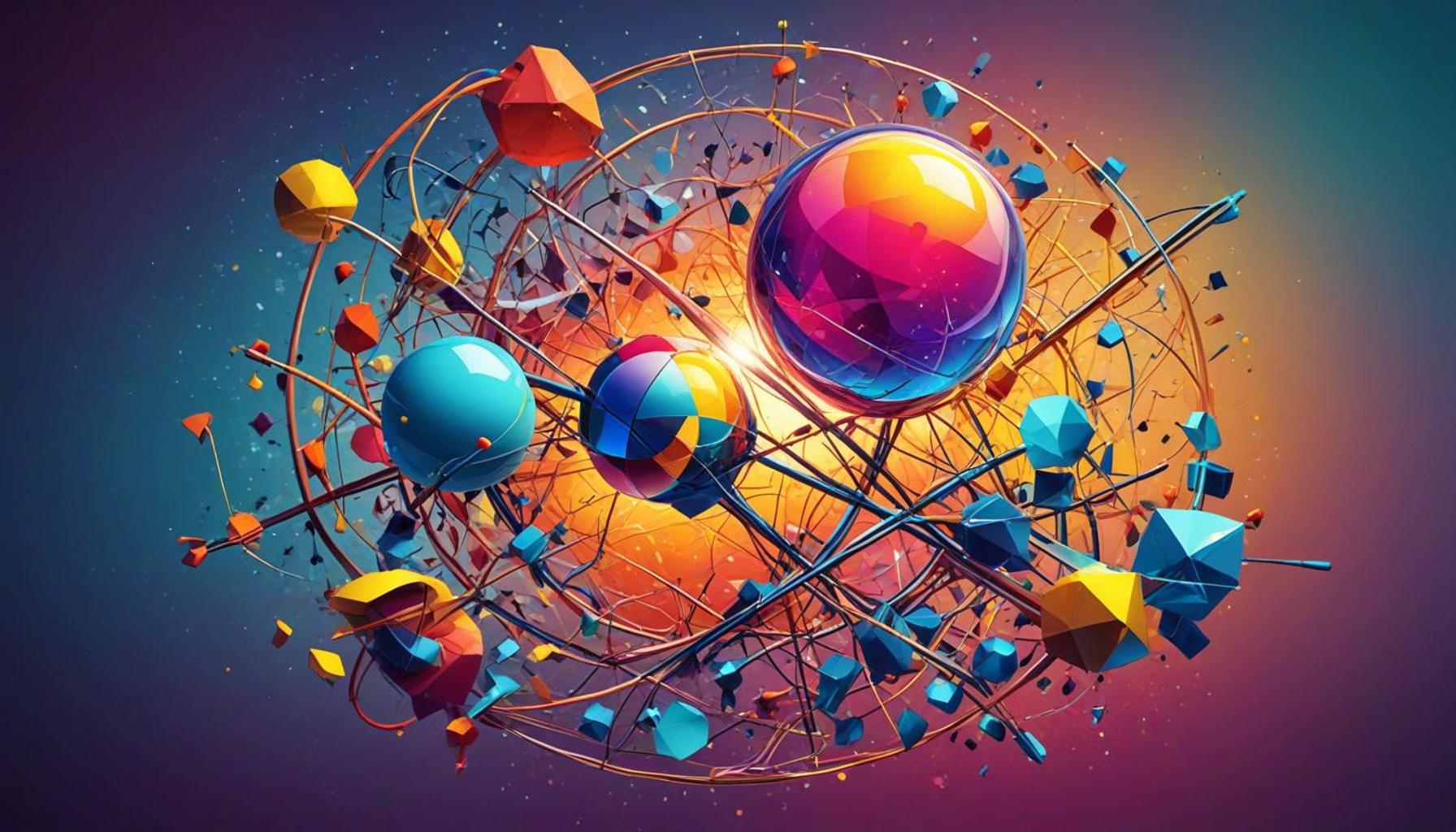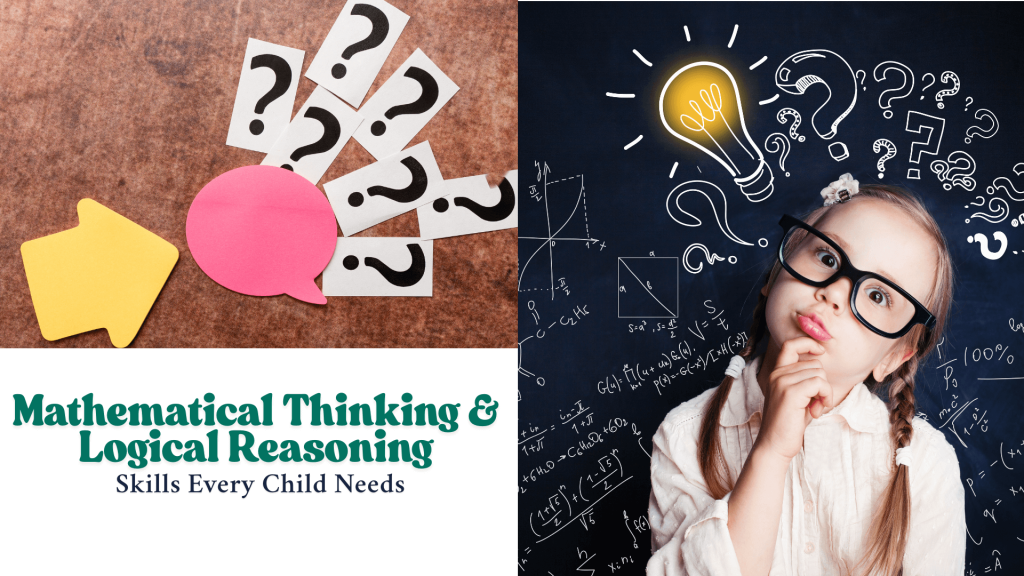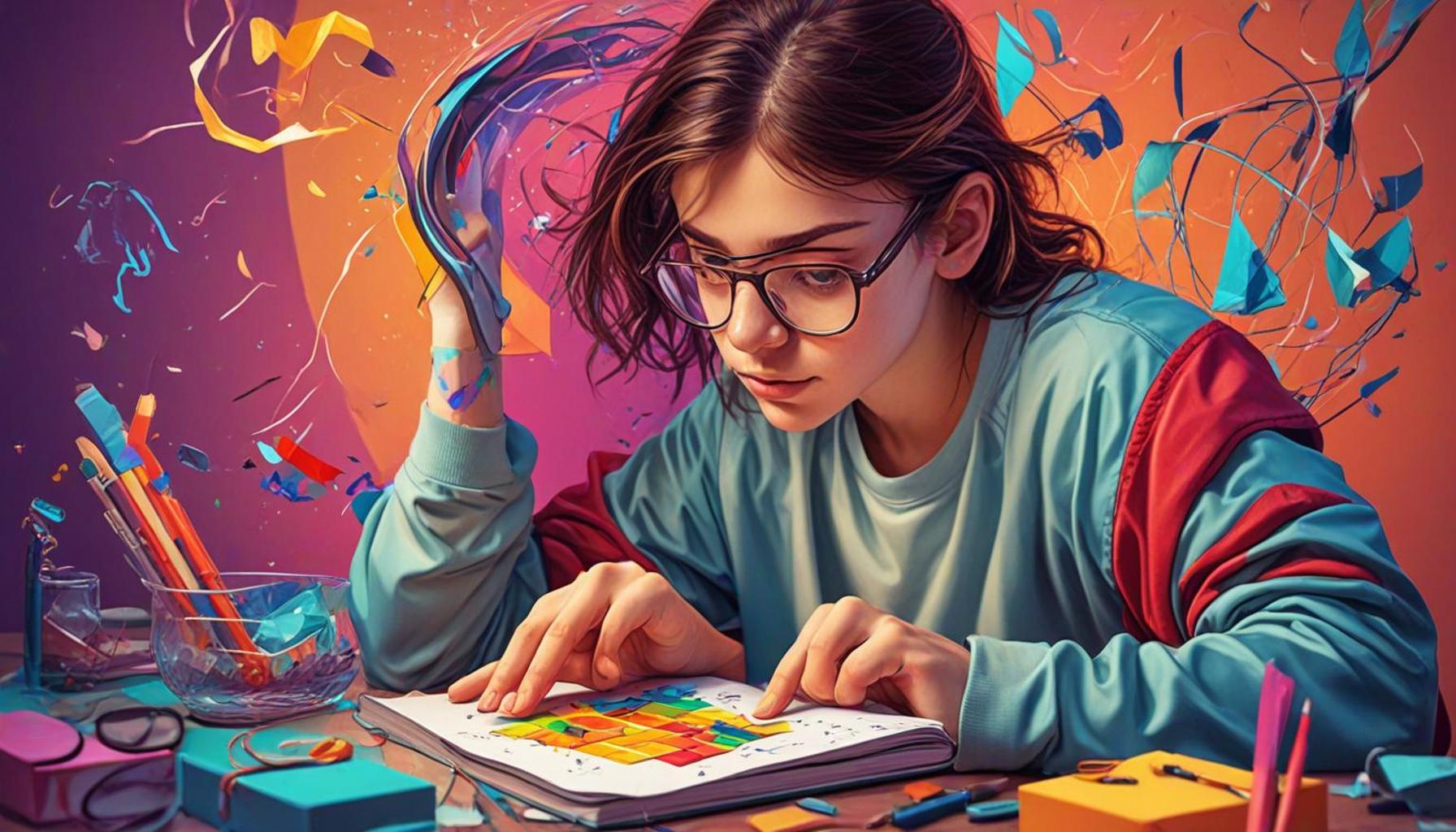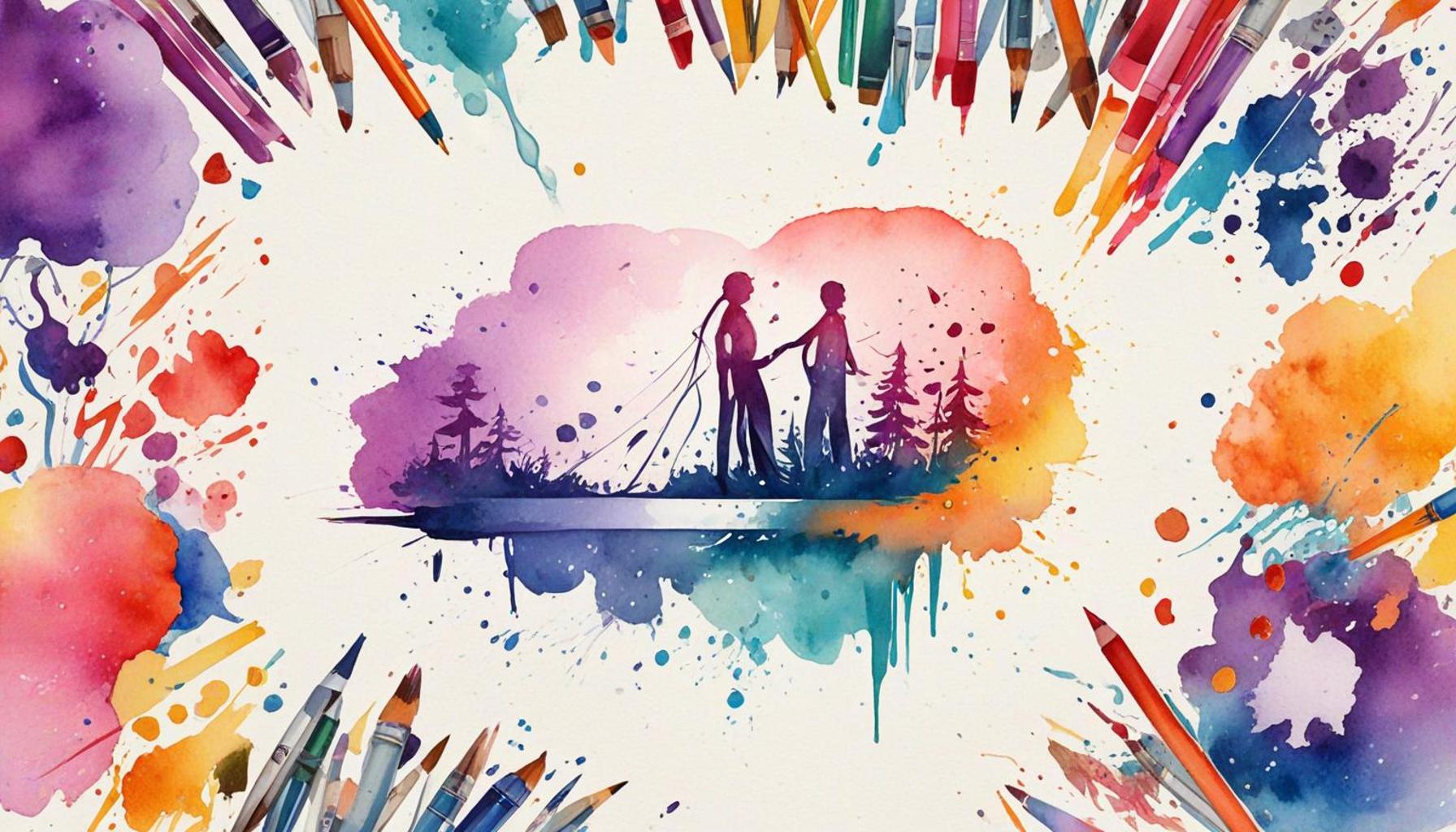Logic and Creativity: The Intersection of Logical Reasoning and Innovative Thinking

The Powerful Intersection of Logic and Creativity
In today’s rapidly changing landscape, the relationship between logic and creativity is more crucial than ever. These two seemingly opposite forces collaborate to spark innovation and problem-solving across various sectors. The synergy between structured reasoning and imaginative thinking not only breeds inventive concepts but also drives meaningful change within communities.
Take the realm of technology, for example. Software development is fundamentally grounded in logical algorithms and data structures. However, a successful product will also demand a flair for creative design to enhance user experience. Companies such as Flutterwave and Paystack have thrived in Nigeria’s fintech scene, illustrating how companies can harness both logic and creativity to develop user-friendly platforms that meet market needs.
Business is another arena that illustrates this dynamic interplay. Effective strategic planning relies heavily on analytical skills, where data-driven decisions optimize operations. Yet, the narratives crafted in marketing campaigns often originate from imaginative storytelling, a technique that resonates deeply with consumers. For instance, brands like Dangote and Glo utilize captivating advertisements that evoke emotions while providing compelling information about their products.
In education, this synergy manifests in teaching methodologies. Educators increasingly implement creative strategies, such as project-based learning and interactive activities, alongside logical frameworks like standardized curricula and assessments. Nigerian institutions are embracing this blend, recognizing that students learn best when their logical reasoning is stimulated alongside their creativity. Programs focused on STEM (Science, Technology, Engineering, and Mathematics) combined with arts are gaining traction in the educational landscape, ultimately preparing students for diverse future roles.
In Nigeria, where economic challenges abound, the integration of logical reasoning and innovative thinking plays a vital role. For instance, the agricultural sector is leveraging creative techniques such as community-driven farming initiatives and tech-enabled farming solutions. These innovations not only enhance productivity but also foster community engagement and empowerment, showcasing how inventive thinking can address real-world issues.

By delving deeper into the alliance of logic and creativity, we can unearth a wealth of opportunities for transformative change. This relationship holds the potential not just to foster individual achievement but also to elevate entire communities. Understanding and harnessing this potent combination is essential for Nigeria as it navigates its path toward sustainable development and broader economic prosperity.
SEE ALSO: Click here to read another article
Bridging the Gap: How Logic Fuels Creativity
The duality of logic and creativity often invokes a fascinating debate regarding their roles in different disciplines. Yet, they are not merely opposing ideas; they coexist and feeding into each other’s strengths. When logical reasoning is employed alongside innovative thinking, it creates a robust framework that enhances creativity, enabling individuals and organizations to tackle challenges more effectively. This bridge between the two is not only relevant in theoretical discussions but also plays out in real-world scenarios, particularly within Nigeria’s growing sectors.
In the field of design, for example, the innovative minds behind successful companies recognize that effective visual communication is born from both a logical understanding of what works and a creative vision. Graphic designers and product developers often utilize software tools grounded in logic while simultaneously thinking outside the box to generate novel ideas. This combination often leads to groundbreaking products, such as the interactive apps developed by local startups that cater to specific Nigerian audiences, proving that integrating creativity with logic is paramount for pioneering solutions.
Another captivating example can be seen in the arts. Nigerian artists frequently blend traditional themes with contemporary narratives, a process that requires both analytical skills and imaginative prowess. These artists understand the cultural context, employing logical reasoning to interpret symbols and messages in their works while pushing the boundaries of artistic expression. Their creations drive conversations about societal issues, generating awareness and inspiring change. This use of logic in art not only makes the pieces relatable but also taps into deeper emotional responses from audiences.
However, harnessing the power of both logic and creativity demands intentional strategies. Here are some effective approaches that demonstrate their intersection:
- Cross-disciplinary collaboration: Encouraging collaboration between individuals from different fields can yield innovative results. For instance, joint projects between engineers and artists can produce unique solutions, such as creative infrastructures or public art installations that enhance urban spaces.
- Embracing the design thinking process: Utilizing frameworks that encourage ideation, prototyping, and testing helps individuals fuse logical analysis with creative brainstorming. This method is evident in many tech companies in Nigeria that prioritize user-centric design in their product development.
- Encouraging curiosity: Fostering an inquisitive mindset among employees or students can stimulate both logical reasoning and creative thinking. Programs that invite participants to critically evaluate assumptions and explore alternative approaches motivate individuals to find novel solutions based on logical insights.
This blend of logic and creativity empowers individuals to become problem solvers, leading to enriched decision-making and more innovative outcomes. In a country like Nigeria, where challenges abound, leveraging the potential of both forces is essential for identifying sustainable solutions that promote growth and development. By nurturing this intersection, organizations and individuals can cultivate environments where innovation thrives, ultimately driving progress within communities and beyond.
| Cognitive Processes | Impact on Innovation |
|---|---|
| Logical Reasoning | Facilitates systematic approaches to problem-solving, enabling clearer decision-making. |
| Creative Thinking | Encourages novel ideas and perspectives, often leading to groundbreaking solutions. |
| Interdisciplinary Collaboration | Merging both logical and creative inputs maximizes potential outcomes. |
| Adaptive Thinking | Allows for flexibility in approach, evolving with new challenges and insights. |
The intersection of logical reasoning and innovative thinking holds substantial value in fostering advancement across various domains. By understanding how these cognitive processes interact, we can leverage their combined strengths to enhance creative output and rationality in decision-making. Employers are increasingly recognizing the importance of interdisciplinary collaboration in driving innovation. This collaborative spirit encourages teams to integrate diverse viewpoints, leading to more comprehensive solutions. Furthermore, adaptive thinking enhances an individual’s ability to pivot and respond to changing circumstances, ensuring resilience in complex environments. By embracing this synergy between logic and creativity, individuals and organizations can unlock new potentials and remain competitive in an ever-evolving landscape of ideas and strategies.
LEARN MORE: This related article may interest you
Harnessing Innovation: The Role of Logic in Creative Problem Solving
In the quest for effective problem-solving, the parallel pathways of logic and creativity converge, cementing their significance across sectors and initiatives. Understanding how to leverage this intersection can revolutionize approaches to addressing the myriad challenges faced by individuals and organizations. In Nigeria, where entrepreneurial spirit runs deep, innovative solutions that stem from logical reasoning can reshape entire markets and industries.
Take, for instance, the burgeoning tech ecosystem in Nigeria, particularly the rise of fintech companies. These startups are redefining financial services by applying logical algorithms to tackle real-world problems like financial exclusion. Through innovative applications of logical frameworks, companies are creating platforms that not only simplify monetary transactions but also assure security and accessibility for underserved communities. This blend of logic-oriented tech solutions and creative business models demonstrates the tremendous potential for growth when these two elements unite.
In educational settings, promoting the integration of logic and creativity cultivates a generation capable of critical thinking and problem-solving. One popular approach is the STEM education model, which incorporates science, technology, engineering, and mathematics. As part of this curriculums, programs in Nigeria utilize project-based learning—an approach that gives students the freedom to explore and innovate within a structured environment. By engaging students in hands-on experimentation and logical reasoning, educators facilitate an atmosphere where creativity flourishes, and inventive ideas come to life.
The agricultural sector in Nigeria also illustrates the fusion of logical reasoning and creative thinking. Farmers are increasingly employing data analytics and mobile technology to enhance crop yields and optimize resources—an application of logical analysis grounded in real-world agricultural challenges. For example, precision farming combines satellite data with creative irrigation techniques, leading to sustainable practices that improve food security. The logical framework helps farmers make decisions based on empirical evidence, while creative applications personalize solutions to specific needs.
Moreover, the integration of logic and creativity is evident in the media and entertainment industry. From screenplay writing to video production, logical structure is vital for crafting compelling narratives that captivate audiences. Nigerian filmmakers often incorporate logical plot developments alongside imaginative storytelling. This rich storytelling tradition can be seen in the global success of Nollywood, which combines innovative content with logical framing, resonating with audiences both locally and internationally.
To maximize the benefits of this synergy, organizations must intentionally cultivate an environment that encourages risk-taking and experimentation. Strategies such as:
- Workshops and brainstorming sessions: Facilitate creative thinking by encouraging teams to think outside the box. When individuals brainstorm together, they can balance logical reasoning with imaginative ideas, laying the groundwork for innovative solutions.
- Feedback loops: Establishing mechanisms that invite feedback allows organizations to assess logical constructs and refine creative outputs. This iterative process can enhance final products by ensuring that they align with logical reasoning while still pushing creative boundaries.
- Celebrating failures: Encouraging a culture where calculated risks are accepted can drive both logical evaluation and creative experimentation. Recognizing that failure is part of the innovation process fosters resilience and progressive thinking.
By harnessing the intersection of logic and creativity, Nigeria can empower a new wave of innovators who are equipped to address pressing social and economic challenges. This collaboration does not merely enrich individual capabilities; it strengthens communities as well, nurturing a collective capacity for transformative change.
YOU MAY ALSO LIKE: Read read another article
Conclusion: Embracing the Synergy of Logic and Creativity
The interplay between logic and creativity is not merely a theoretical concept but a practical framework that can propel Nigeria toward unprecedented growth and innovation. By recognizing this intersection, industries—from technology to agriculture and media—can cultivate new paradigms of problem-solving that marry data-driven decision-making with imaginative solutions.
As demonstrated through various sectors, logical structures underpin successful innovations while allowing creative minds the freedom to explore and experiment. Companies leveraging logical reasoning to craft inventive business models can effectively address critical challenges such as financial inclusion and food security. Similarly, in educational environments, evolving curricula that intertwine STEM principles with creative methods equip future generations with the tools needed for effective critical thinking and problem-solving.
To fully harness the potential of this synergy, stakeholders—be they entrepreneurs, educators, or policymakers—must foster environments that celebrate both calculated risks and creative endeavors. The adoption of collaborative workshops and robust feedback mechanisms not only refines innovation but also encourages a culture where ideas can flourish without the fear of failure. As Nigeria continues to develop its creative industries and entrepreneurial networks, the dual embrace of logic and creativity could yield transformative results that resonate beyond borders, fostering a vibrant, resilient economy.
In conclusion, the journey towards an innovative future in Nigeria hinges on our ability to embrace the intersection of logical reasoning and innovative thinking. By doing so, we can unlock an ecosystem of creativity that addresses challenges, stimulates growth, and uplifts communities, ensuring a prosperous and inclusive future for all.


